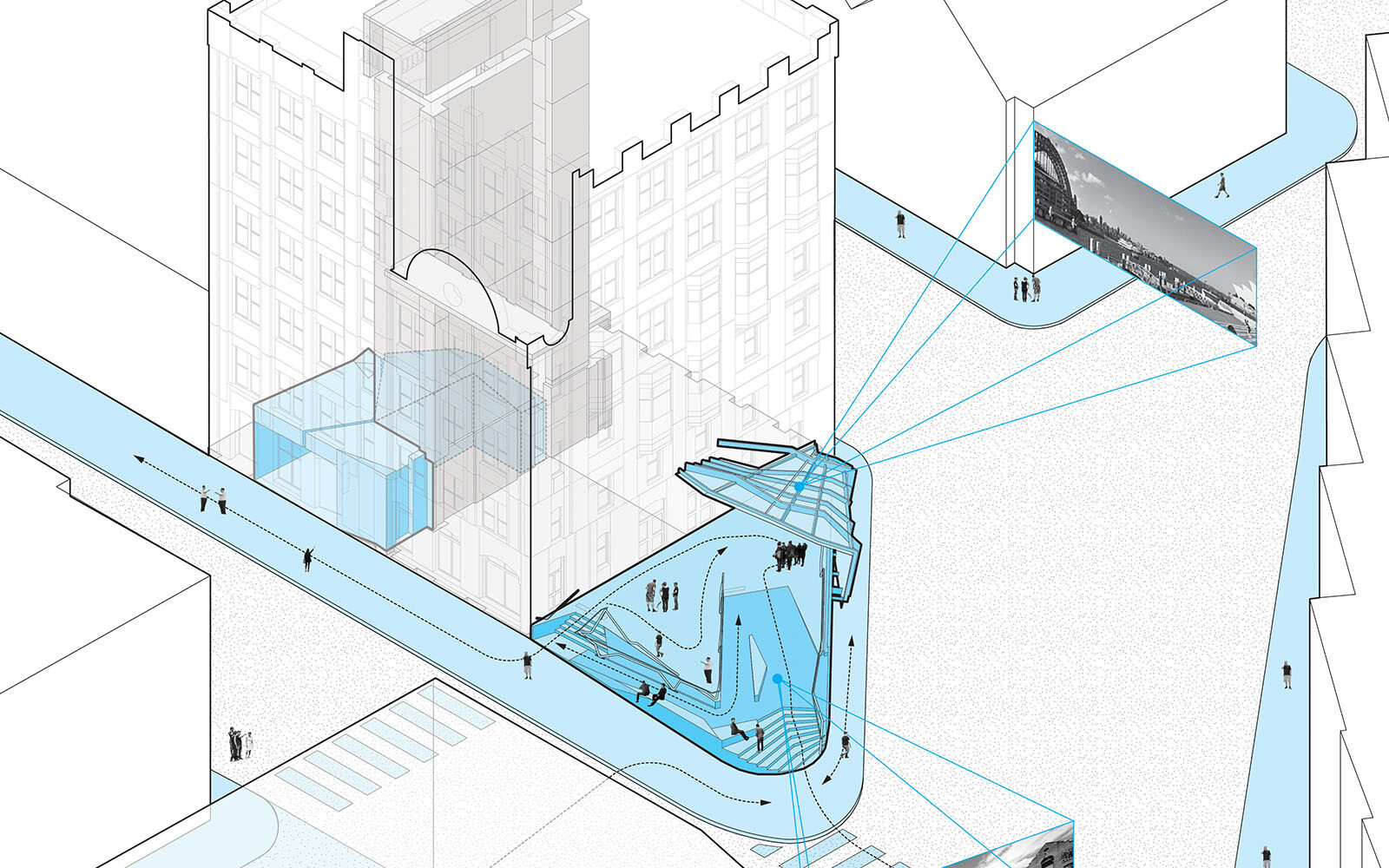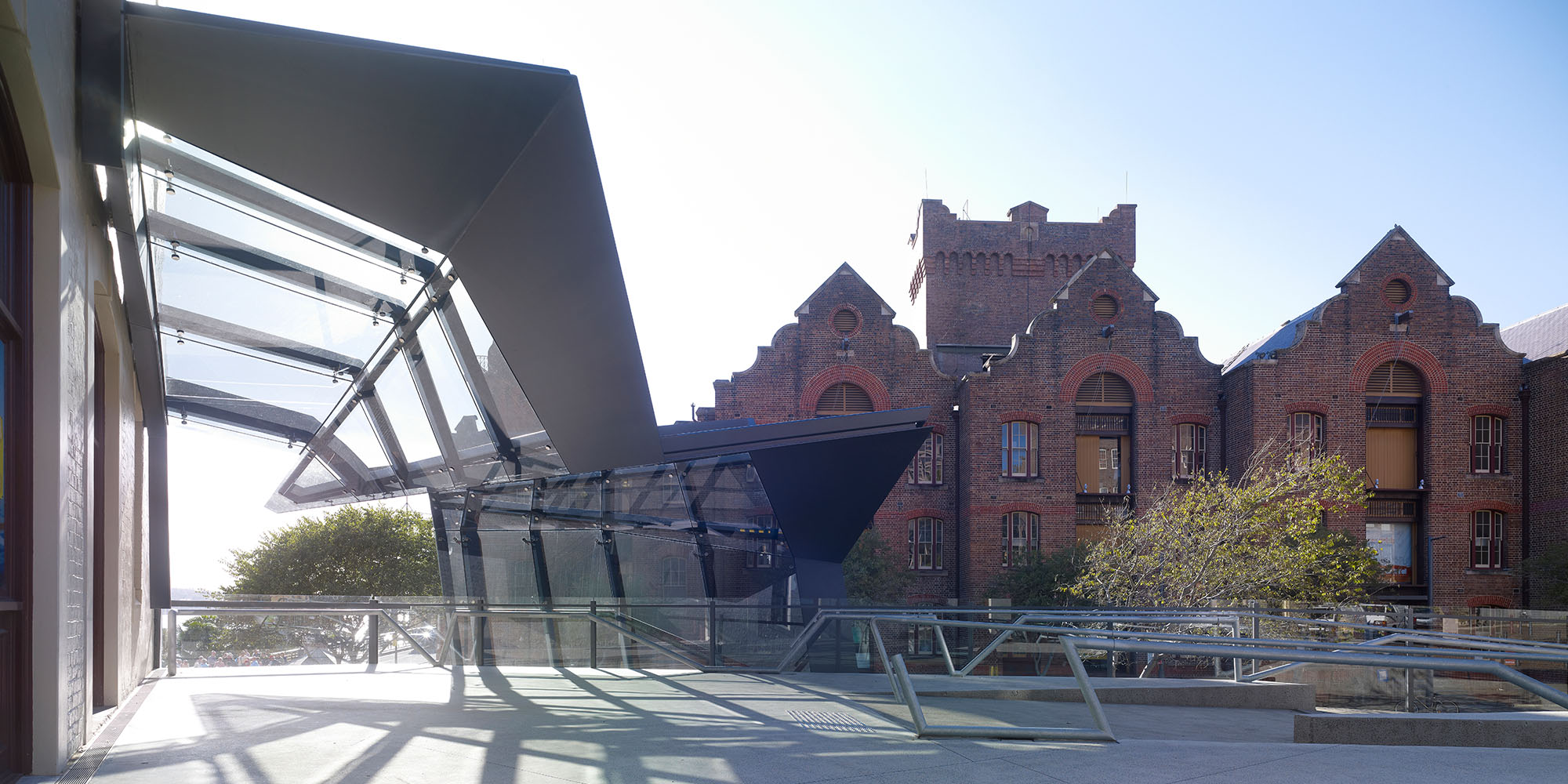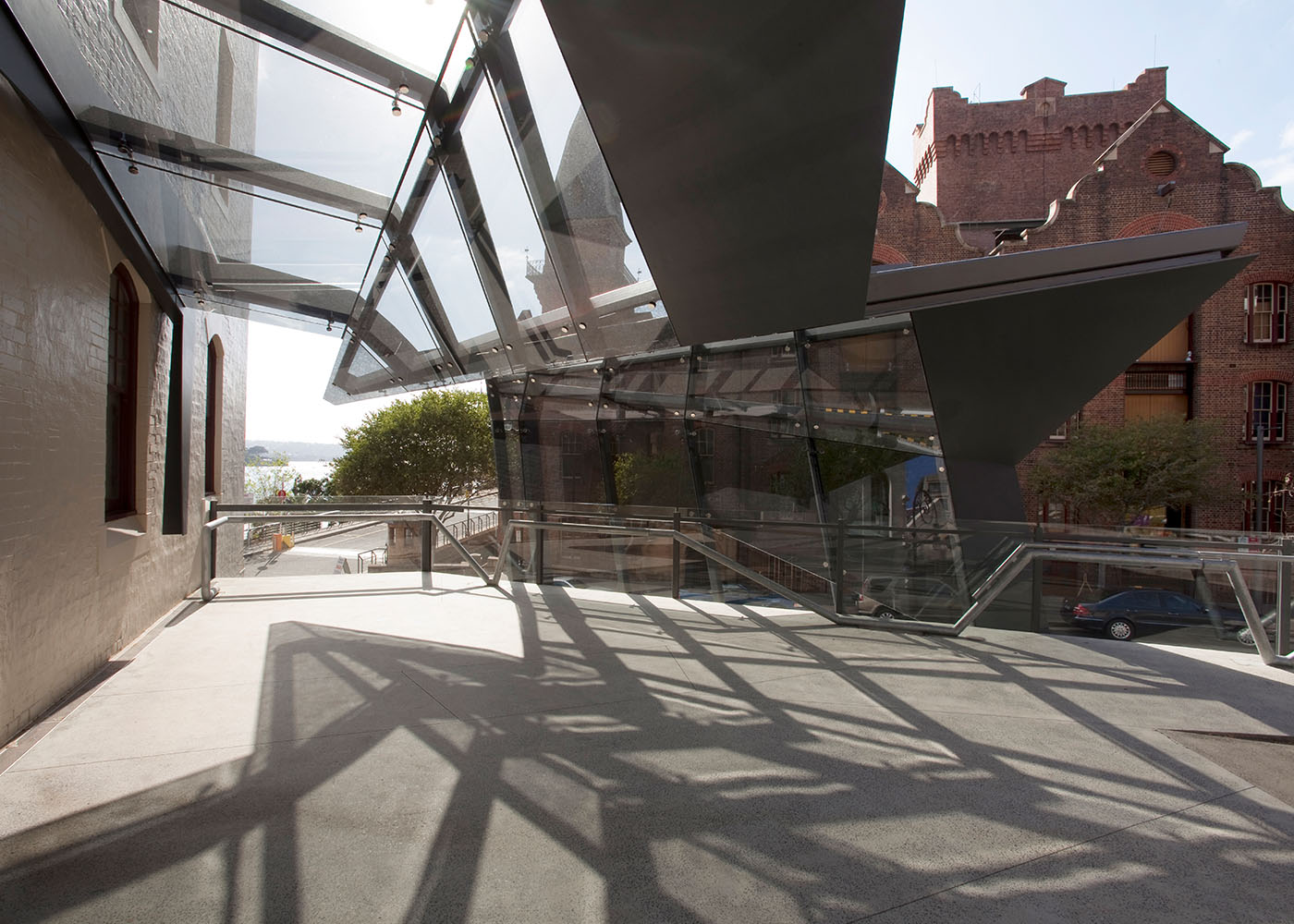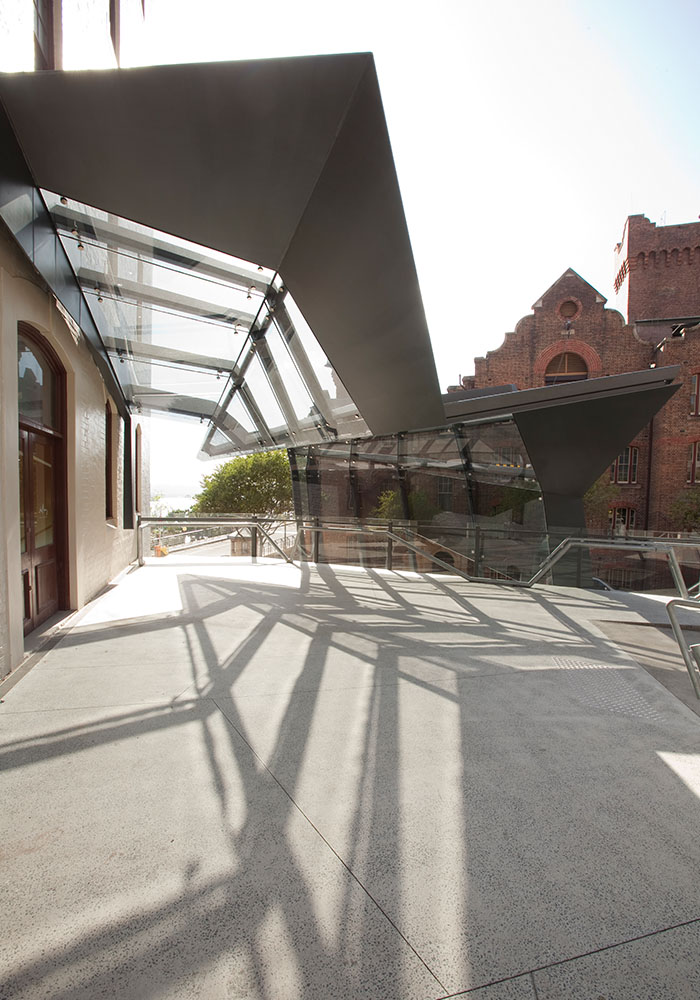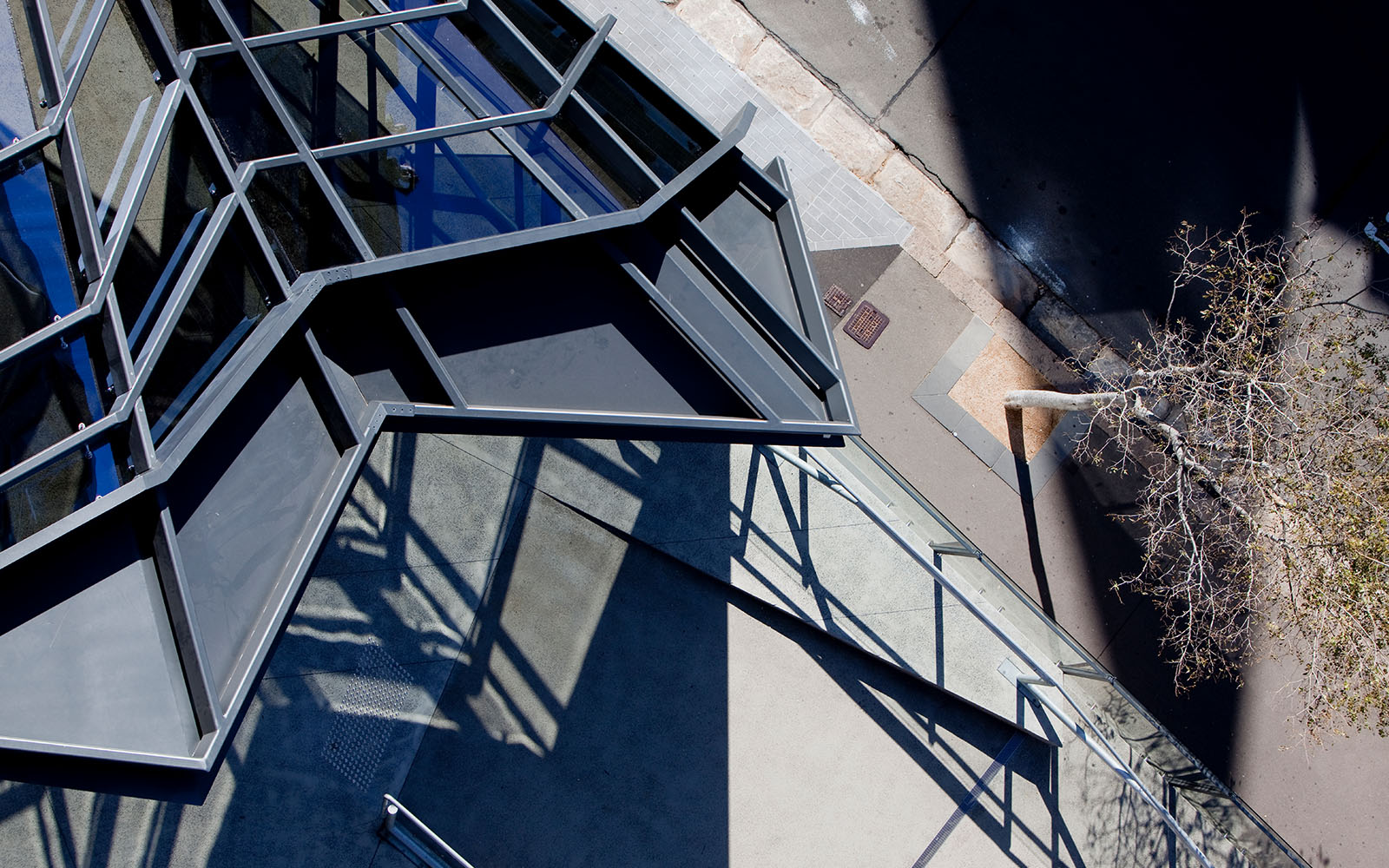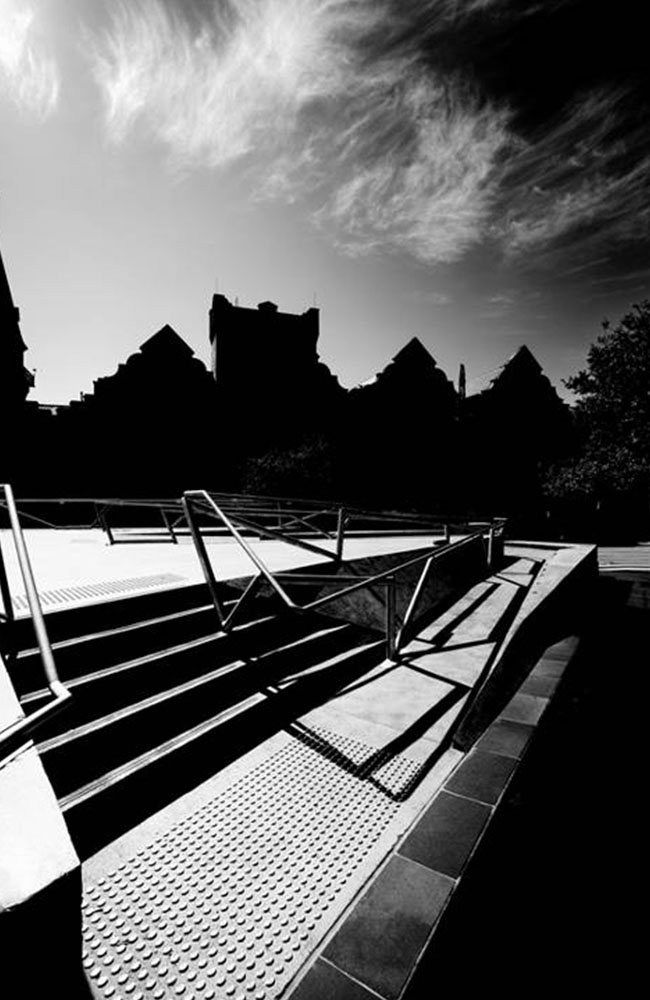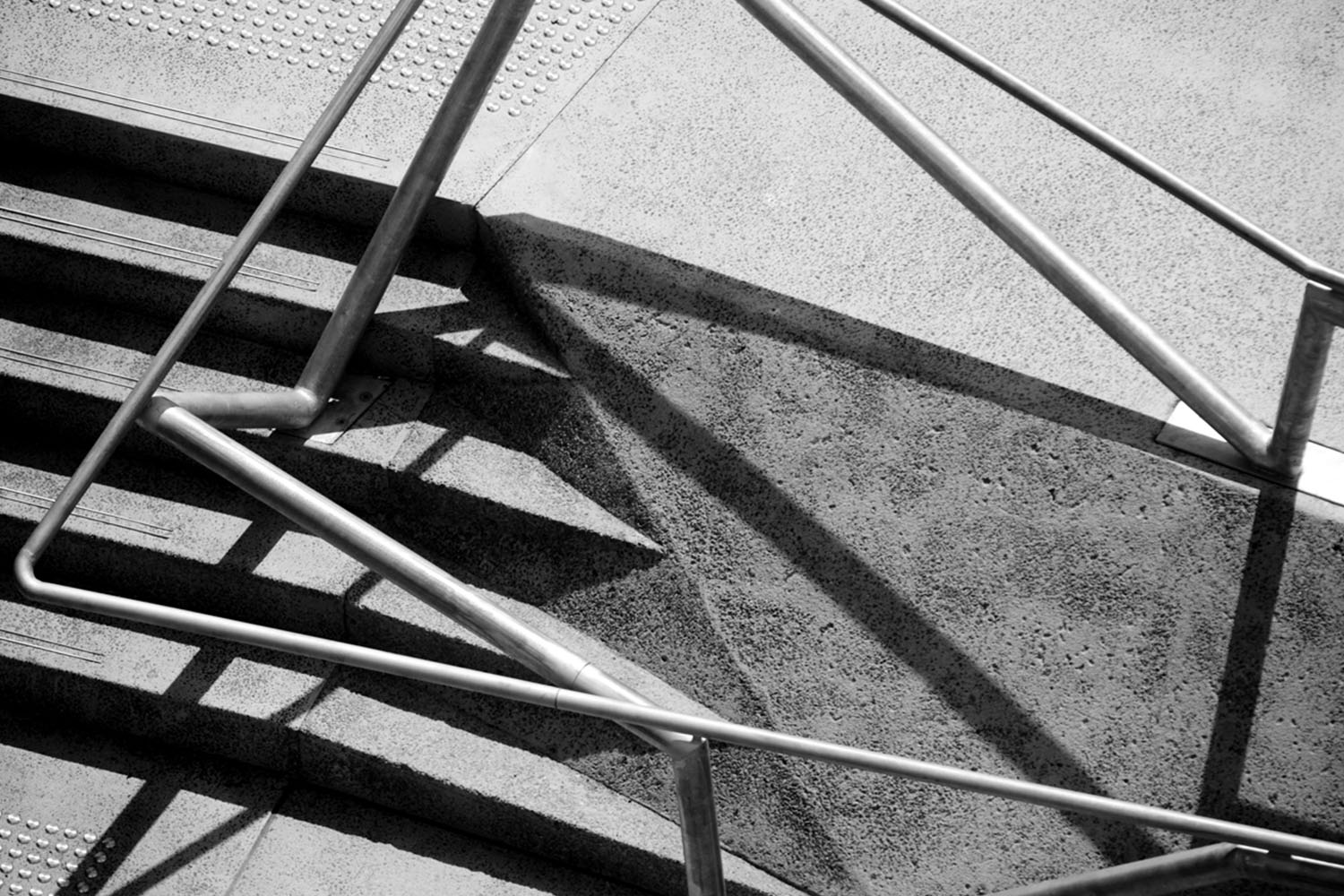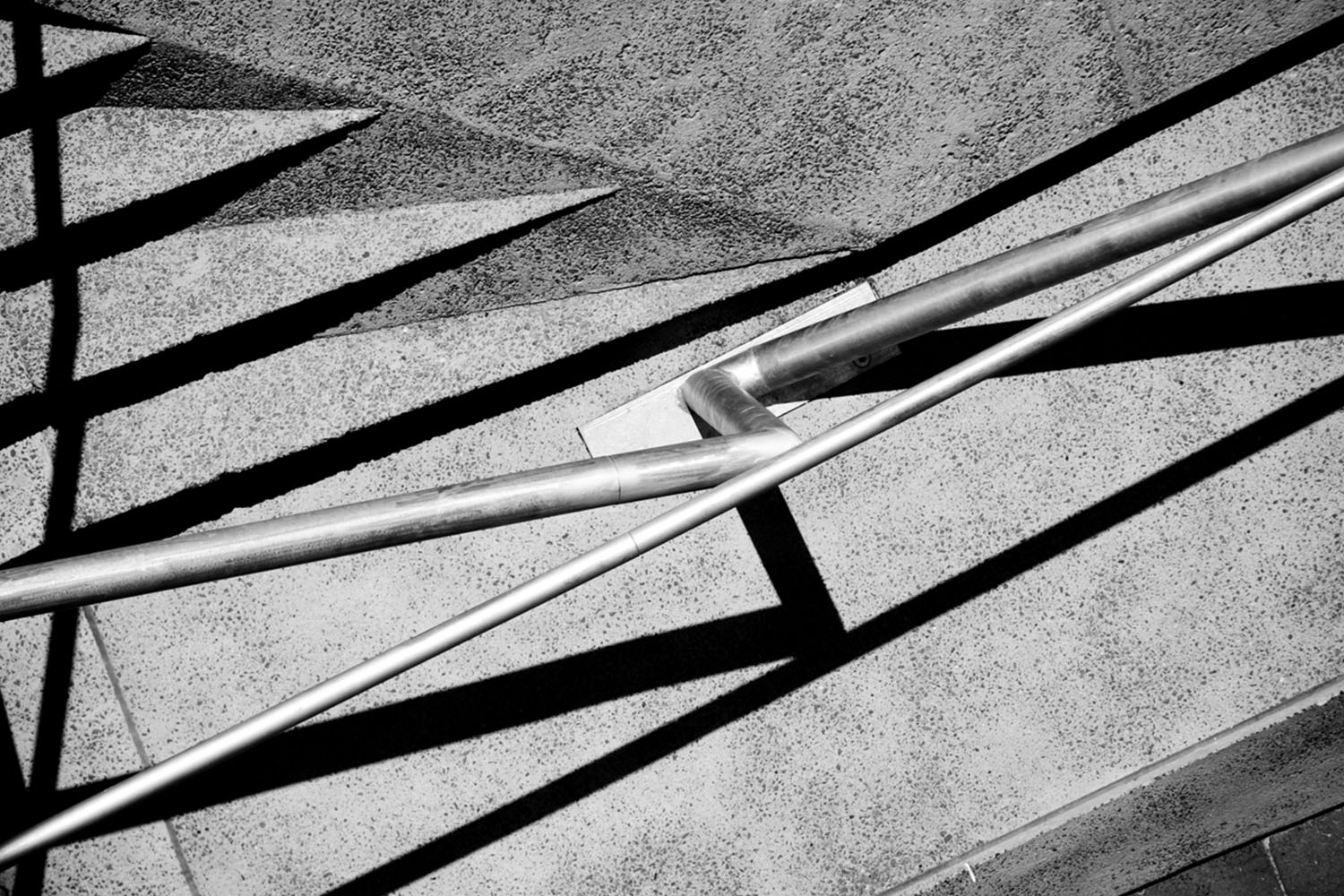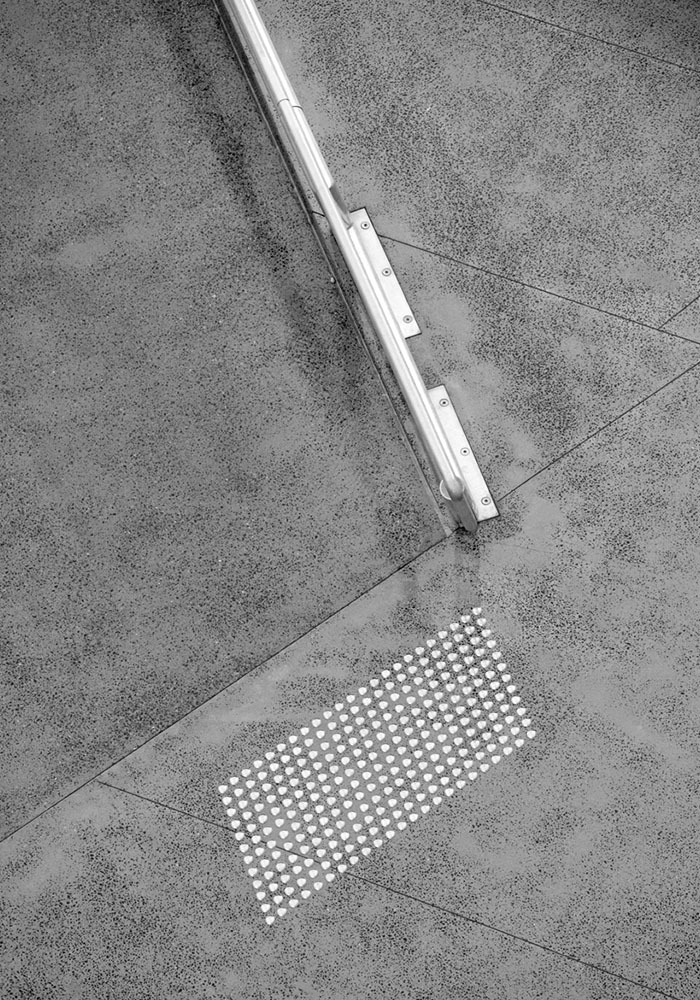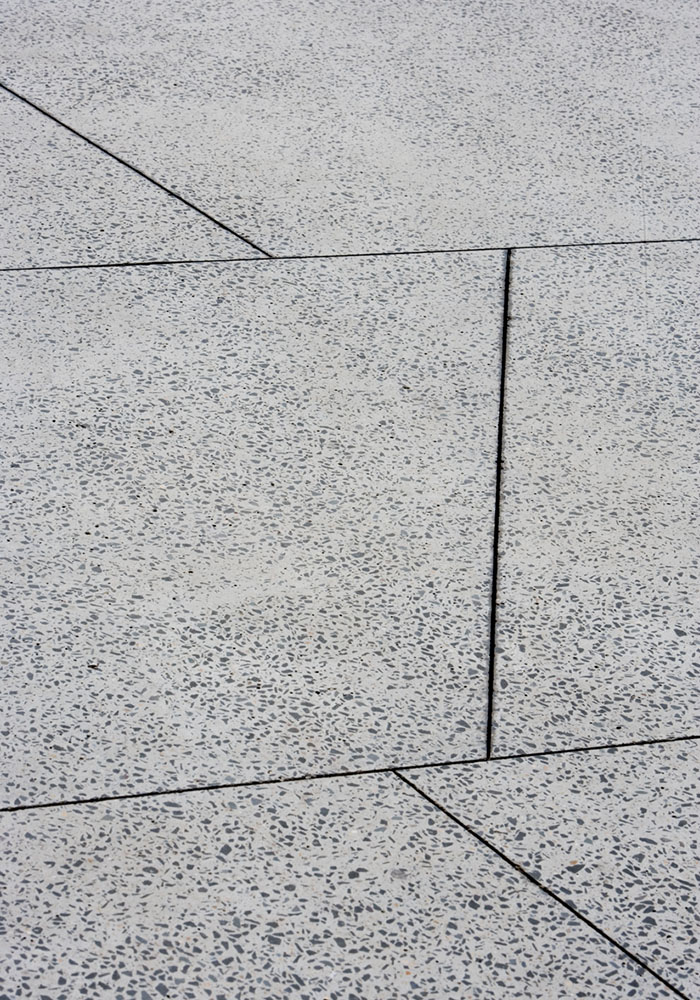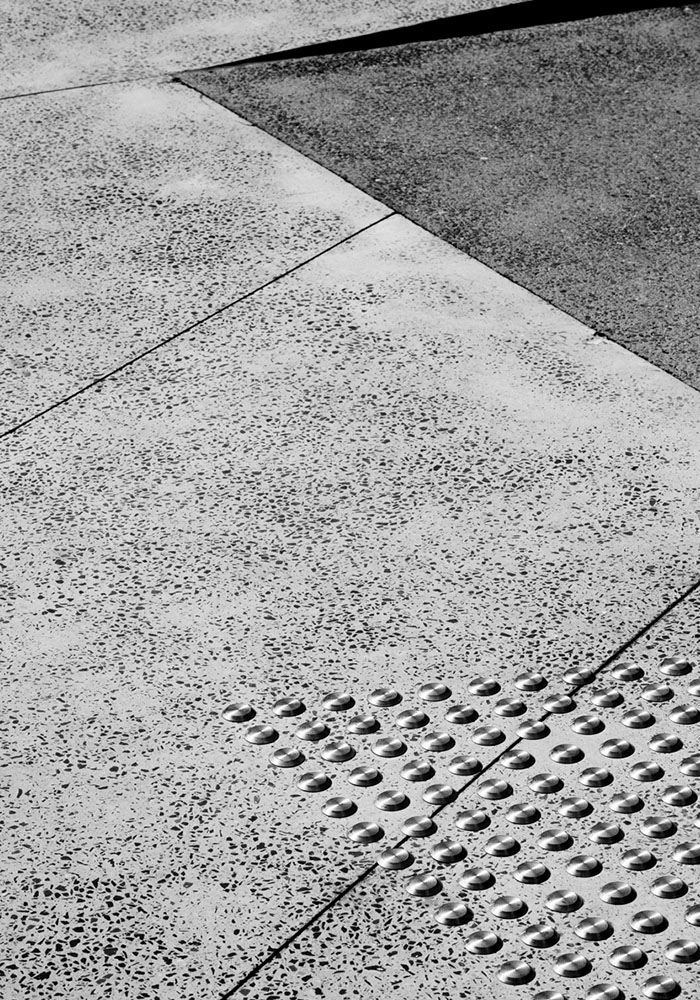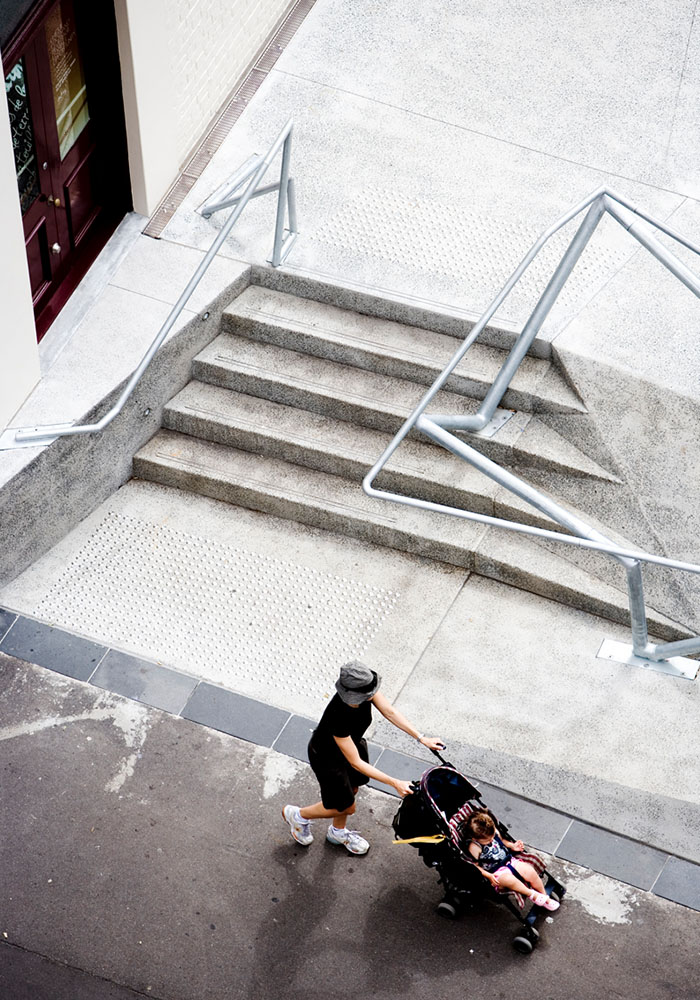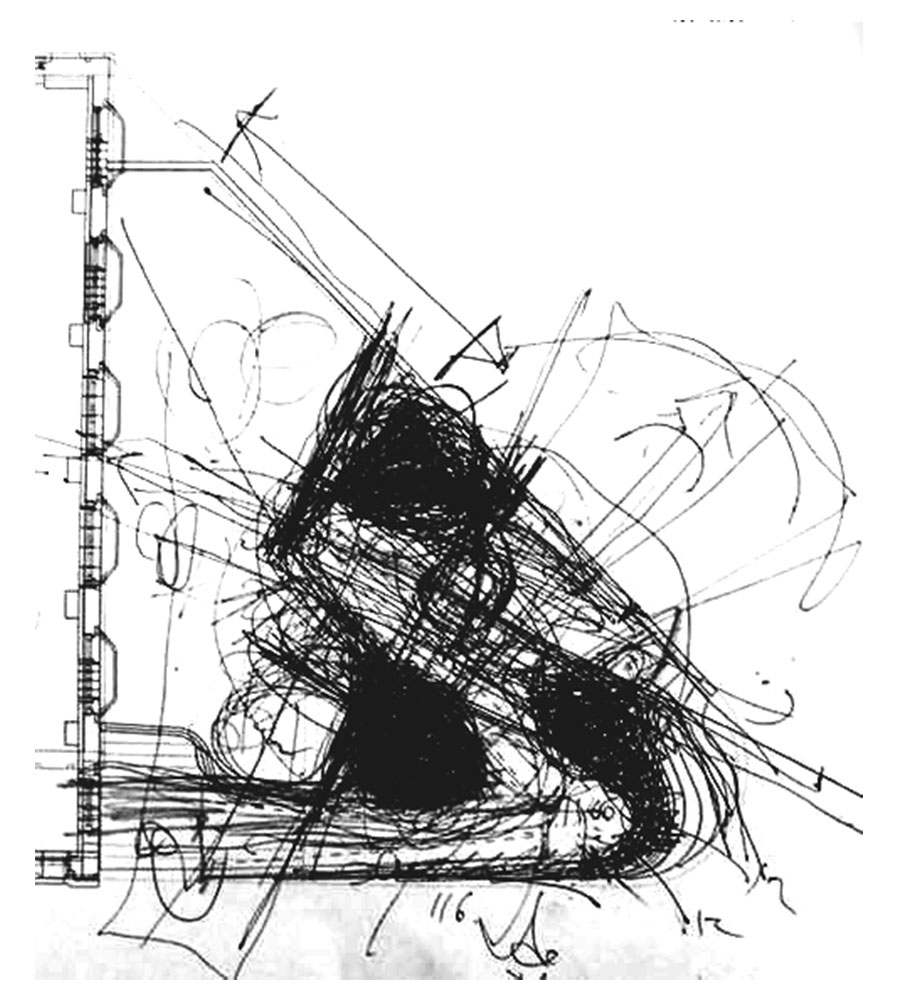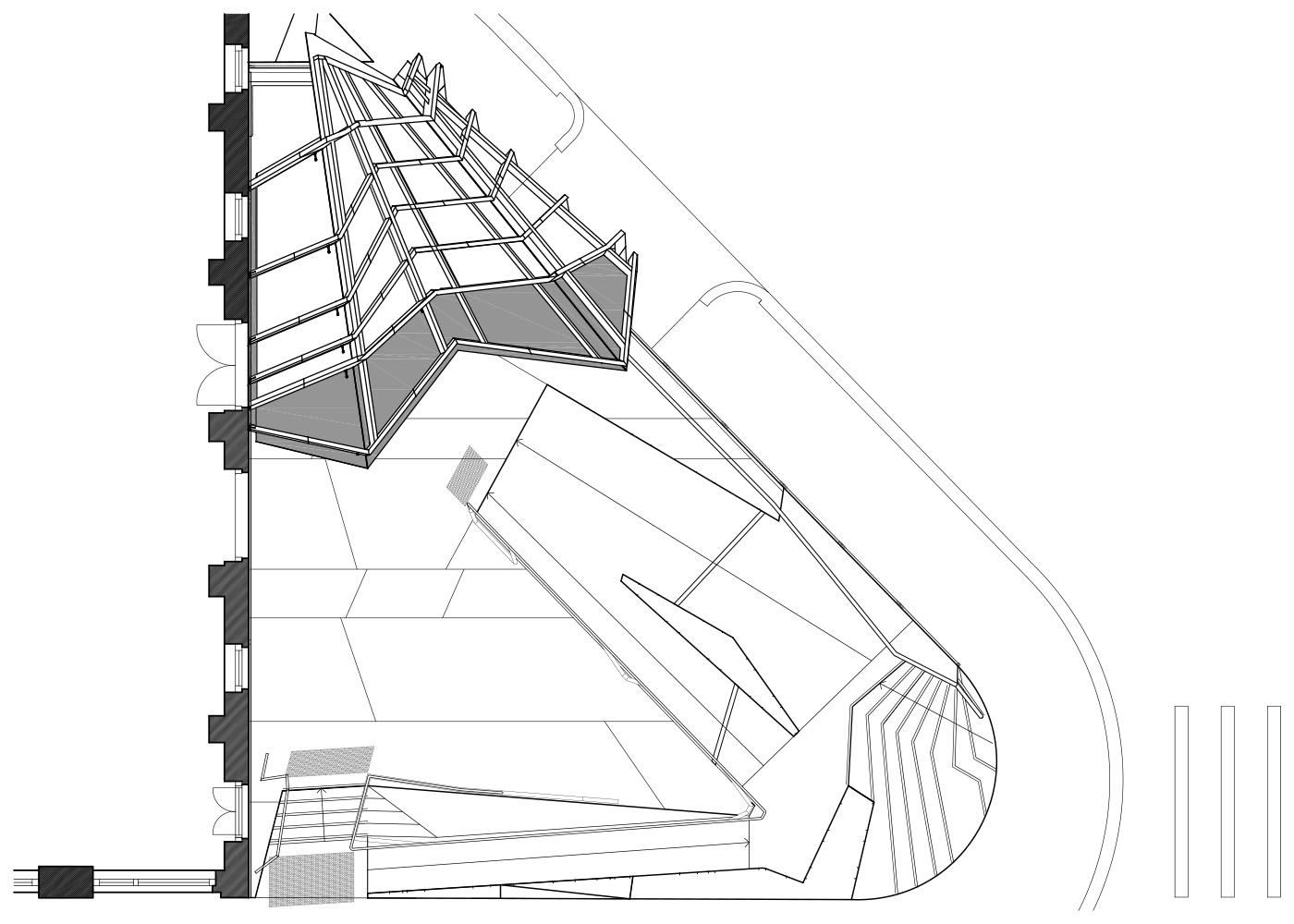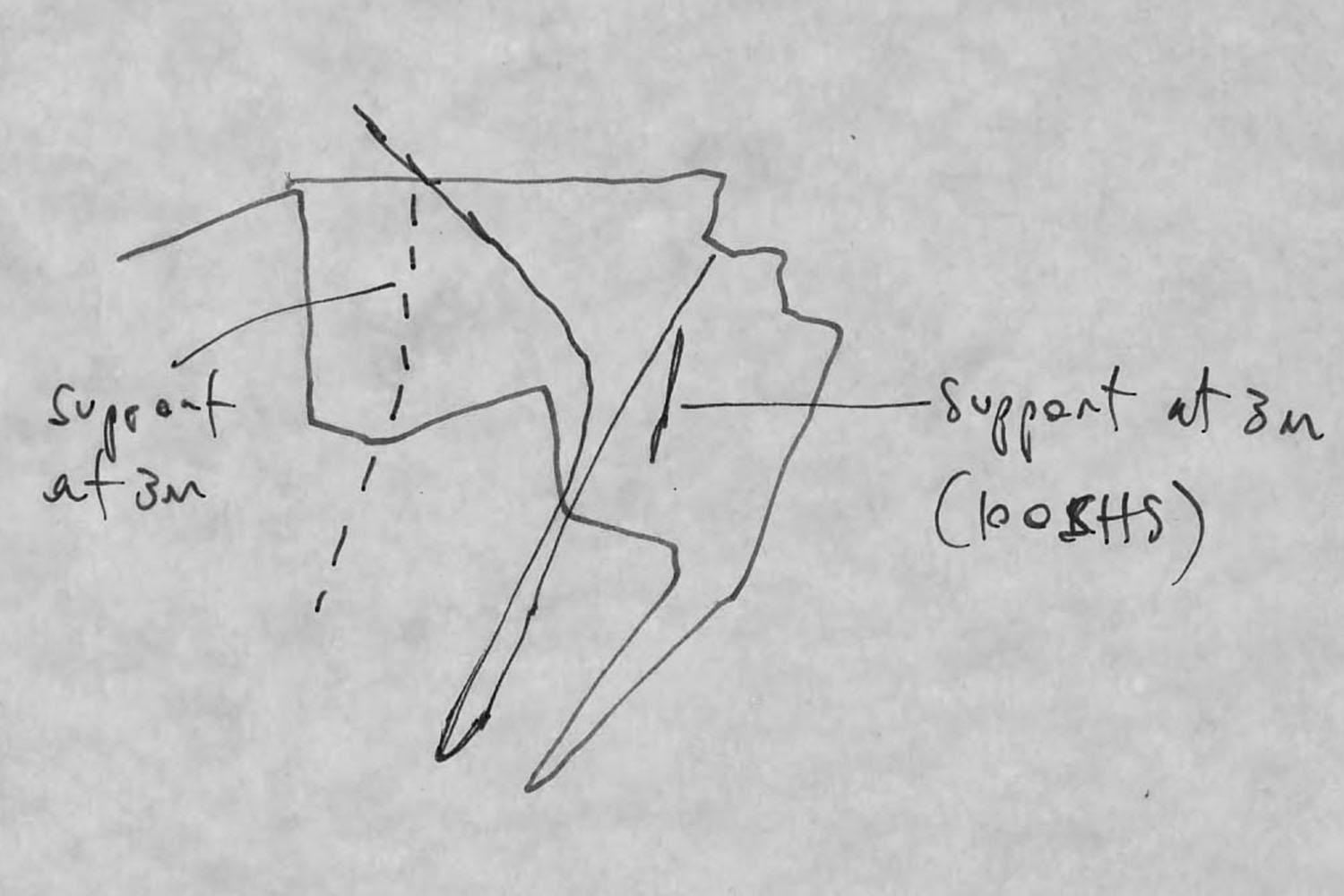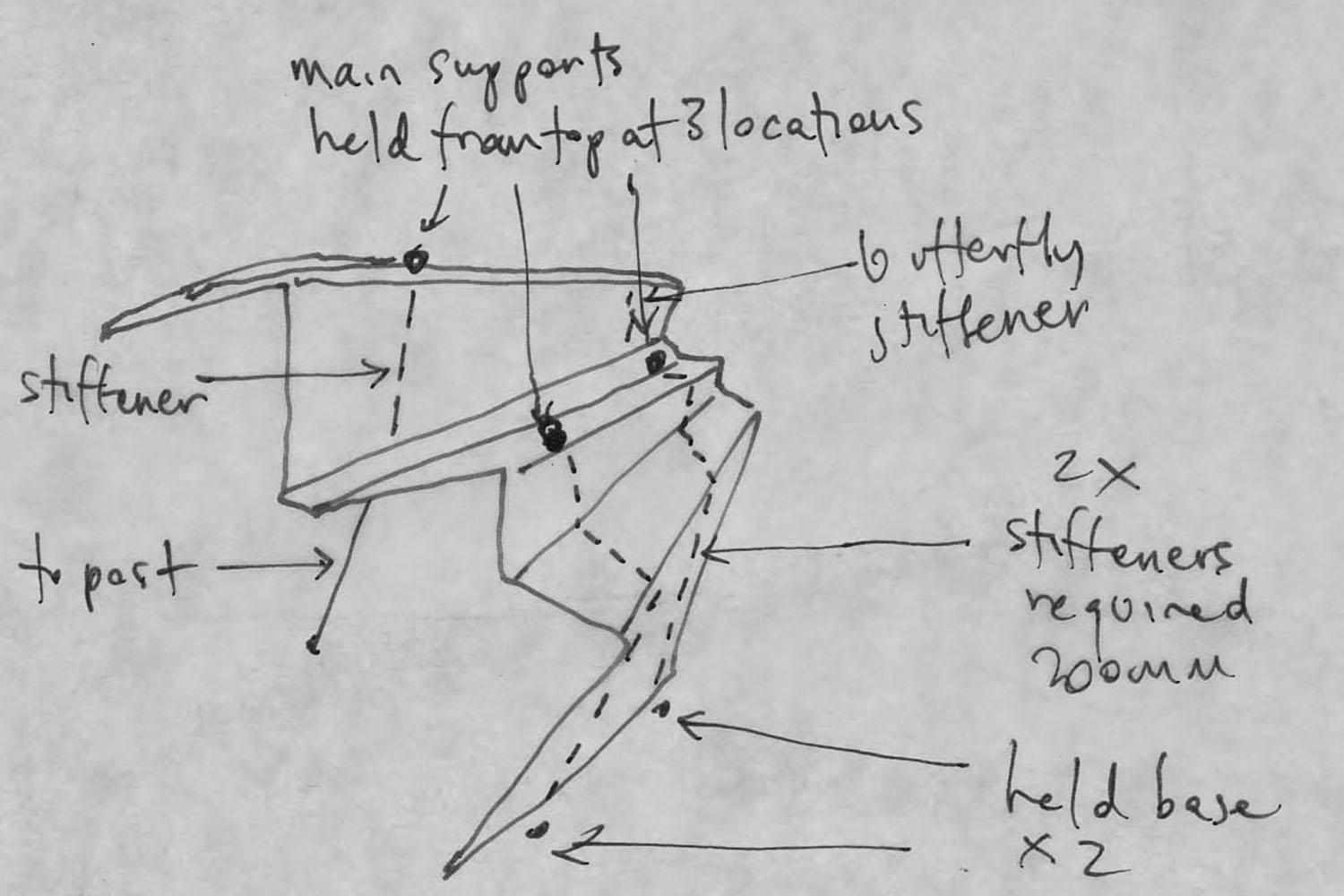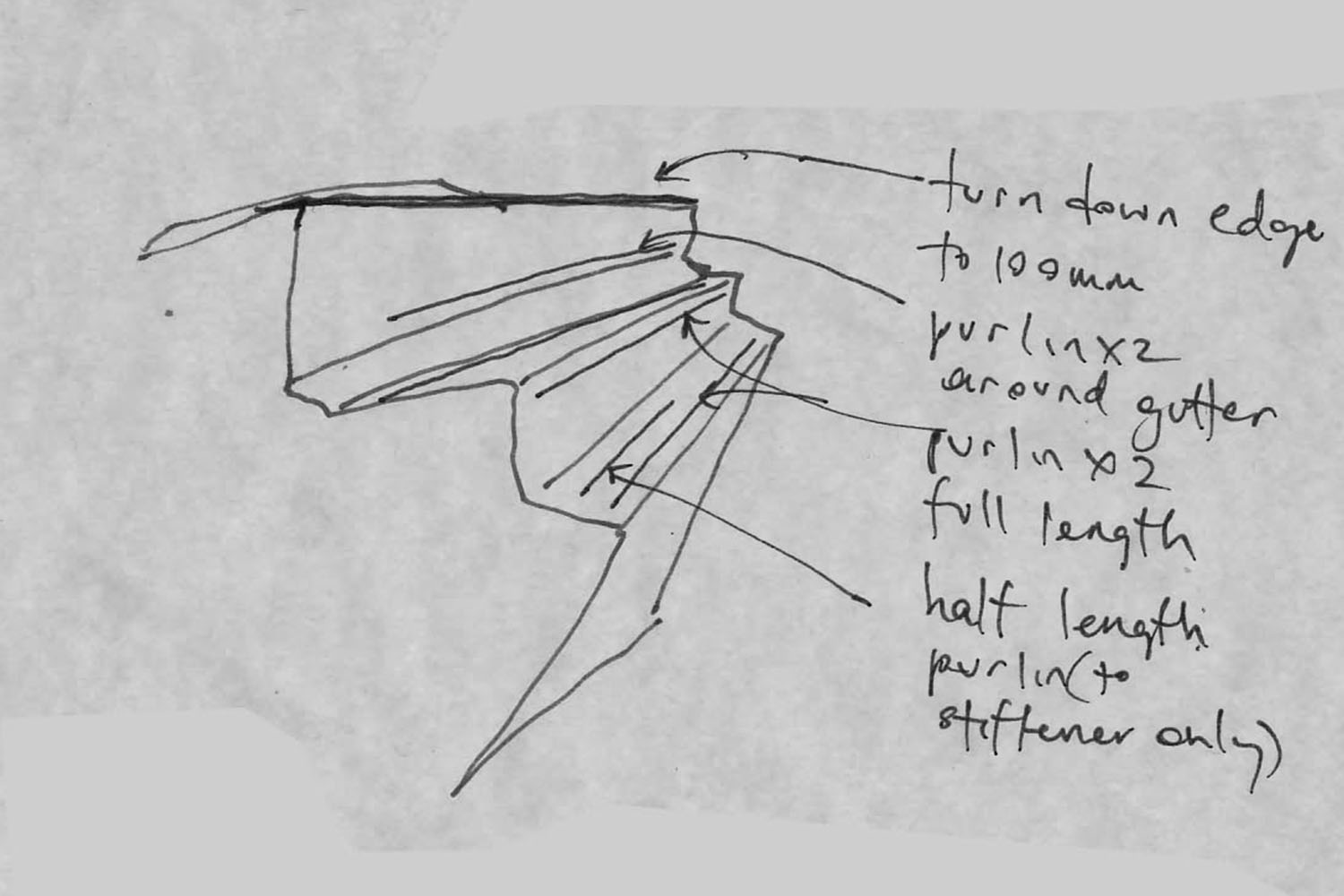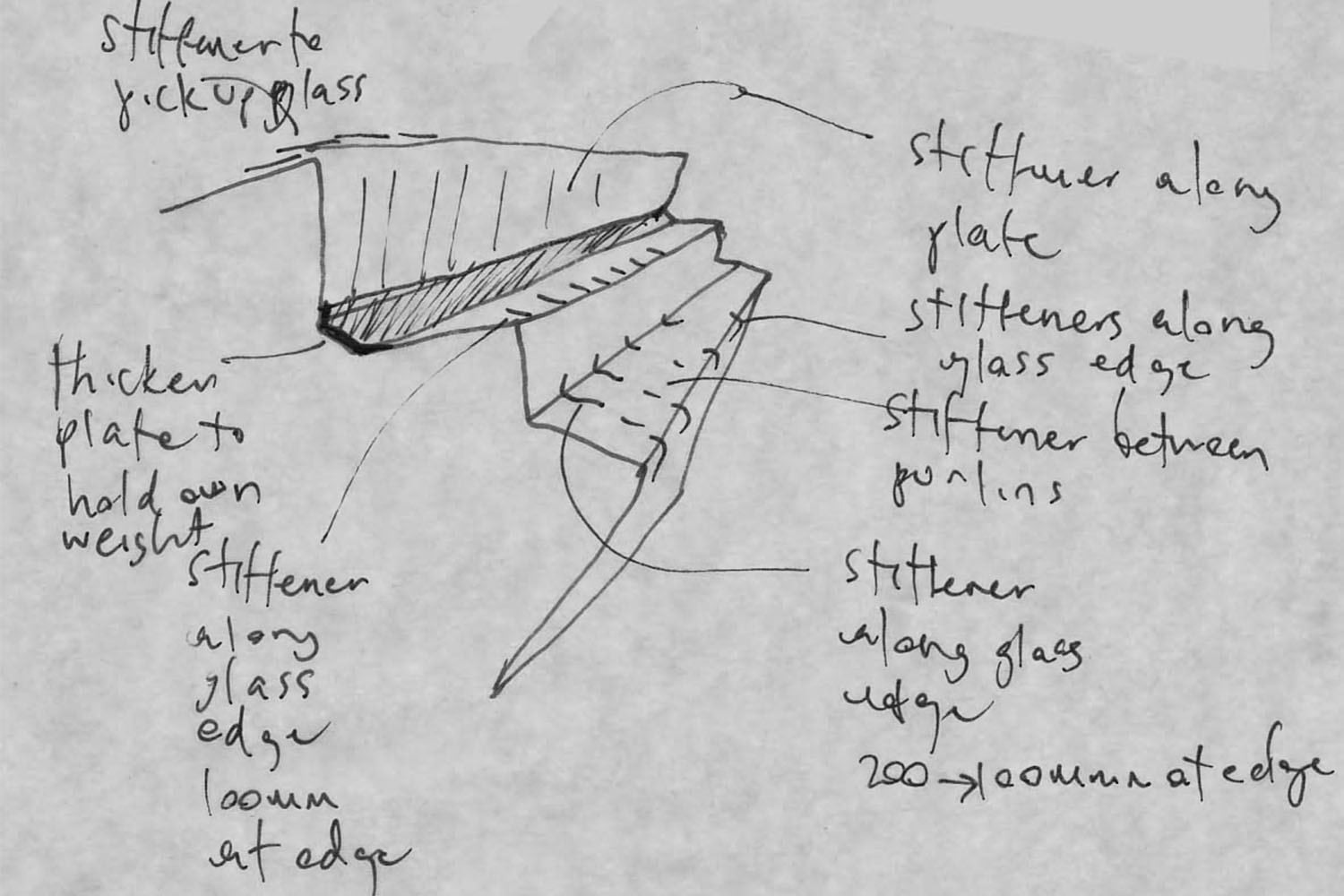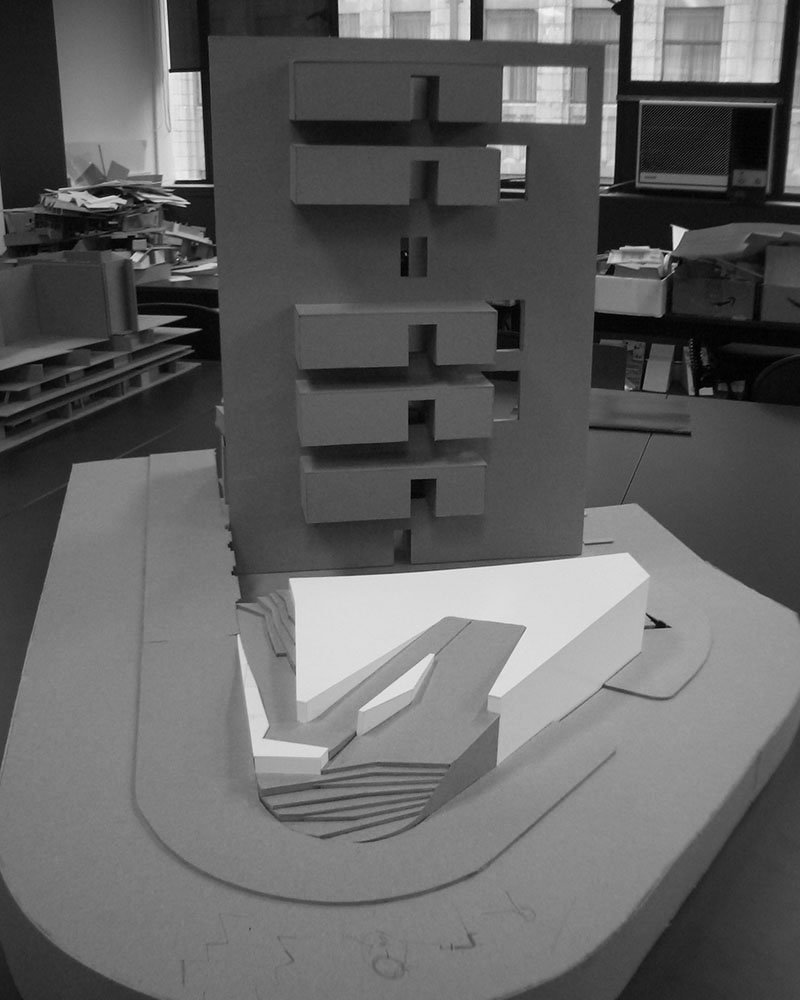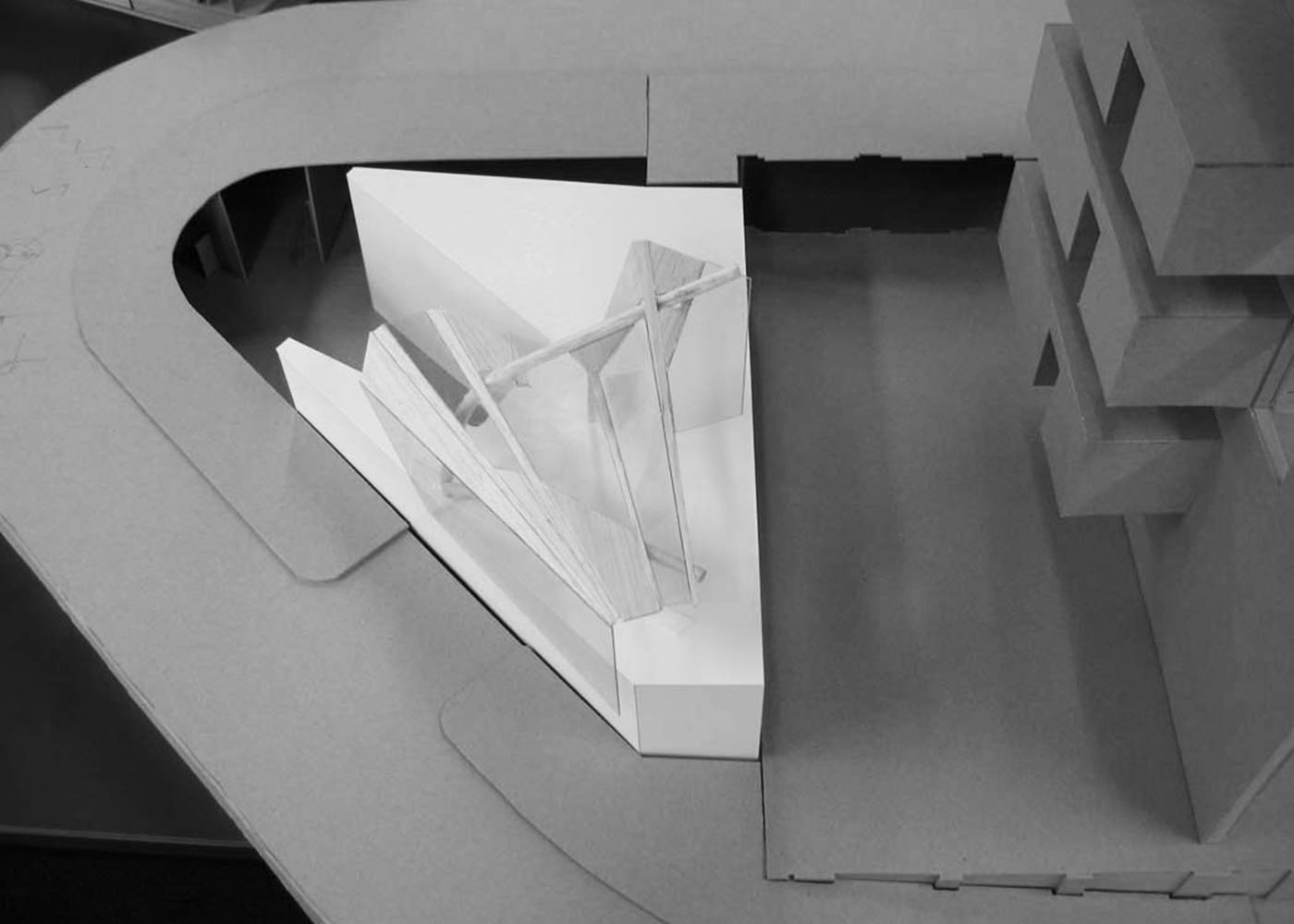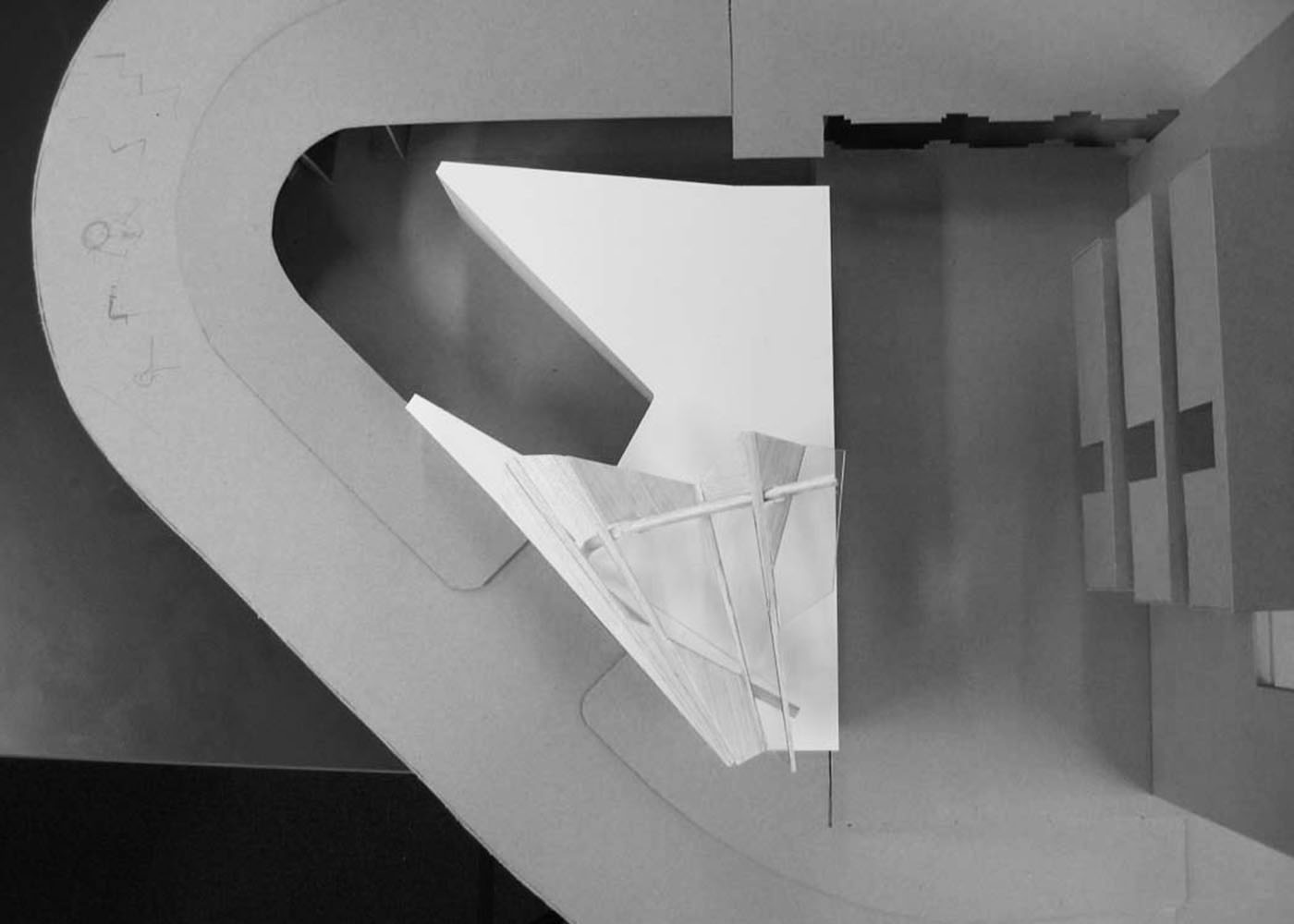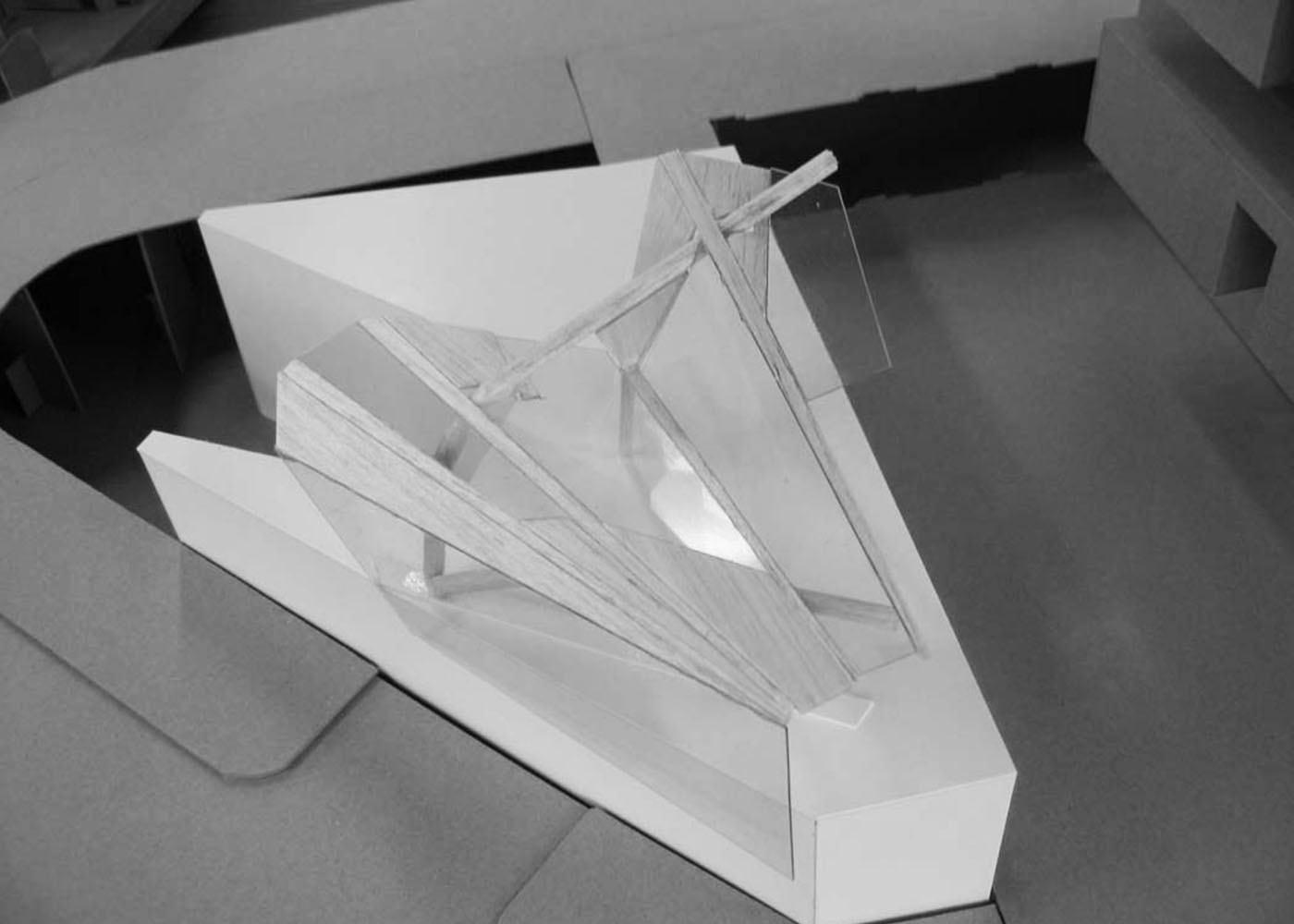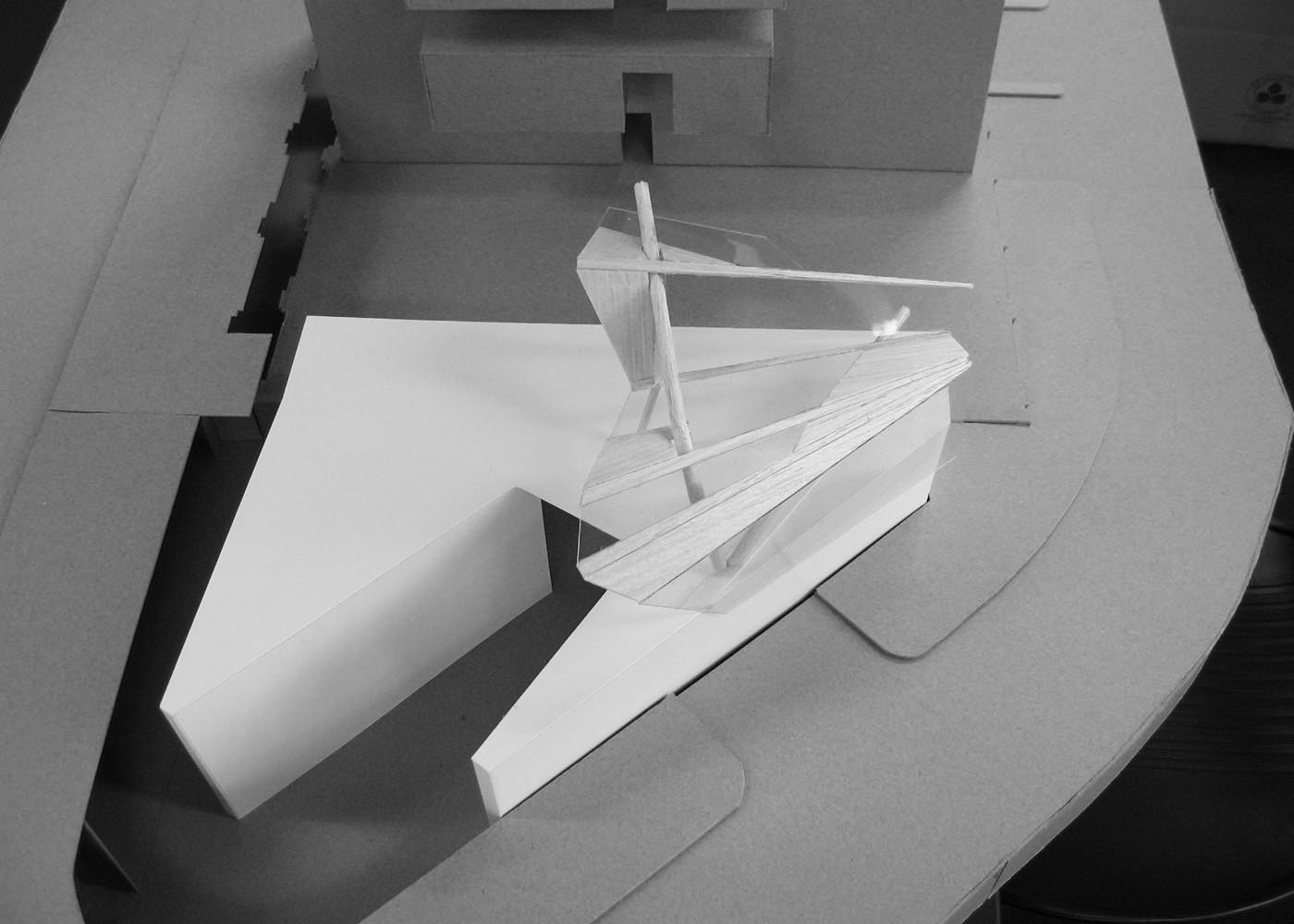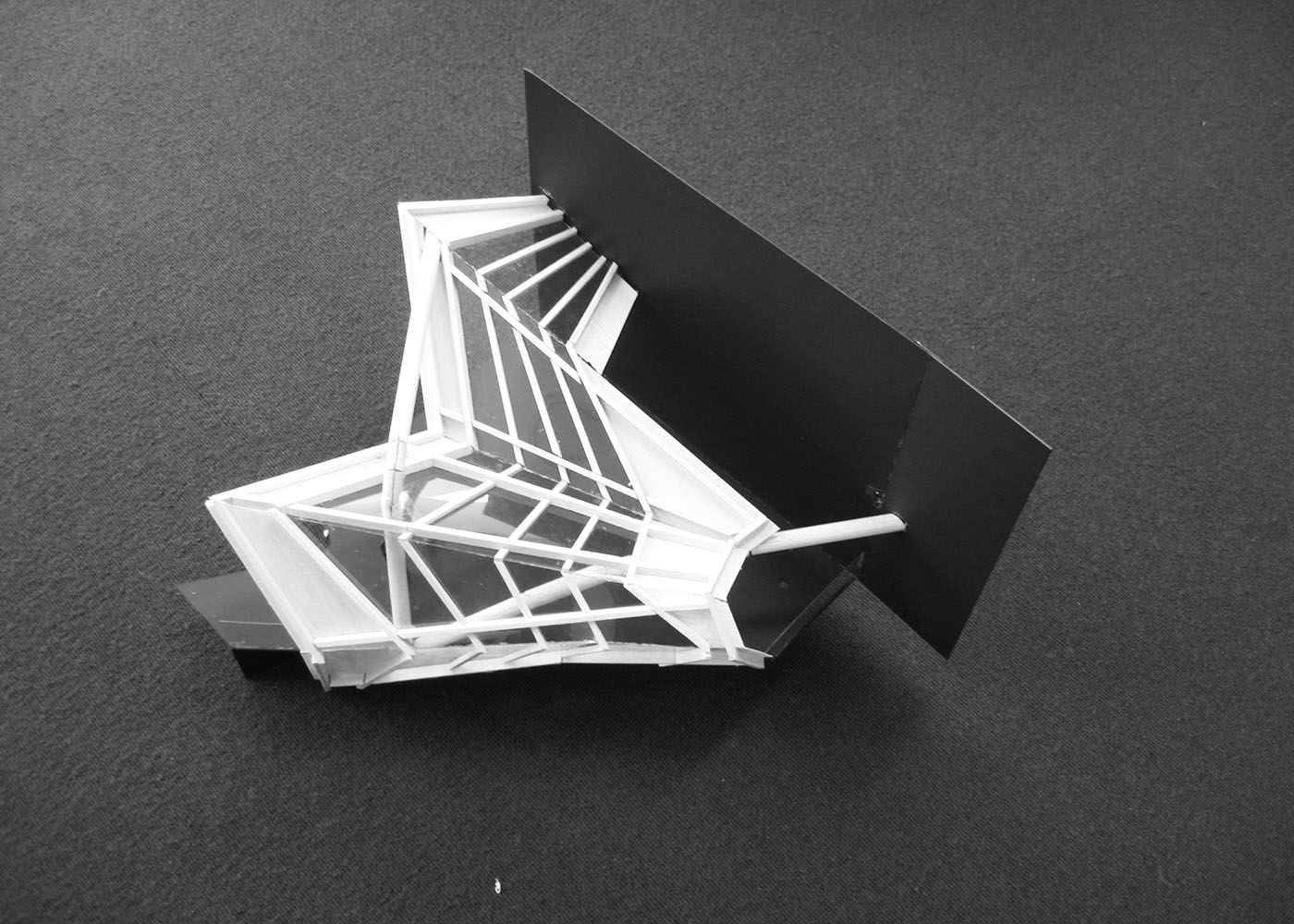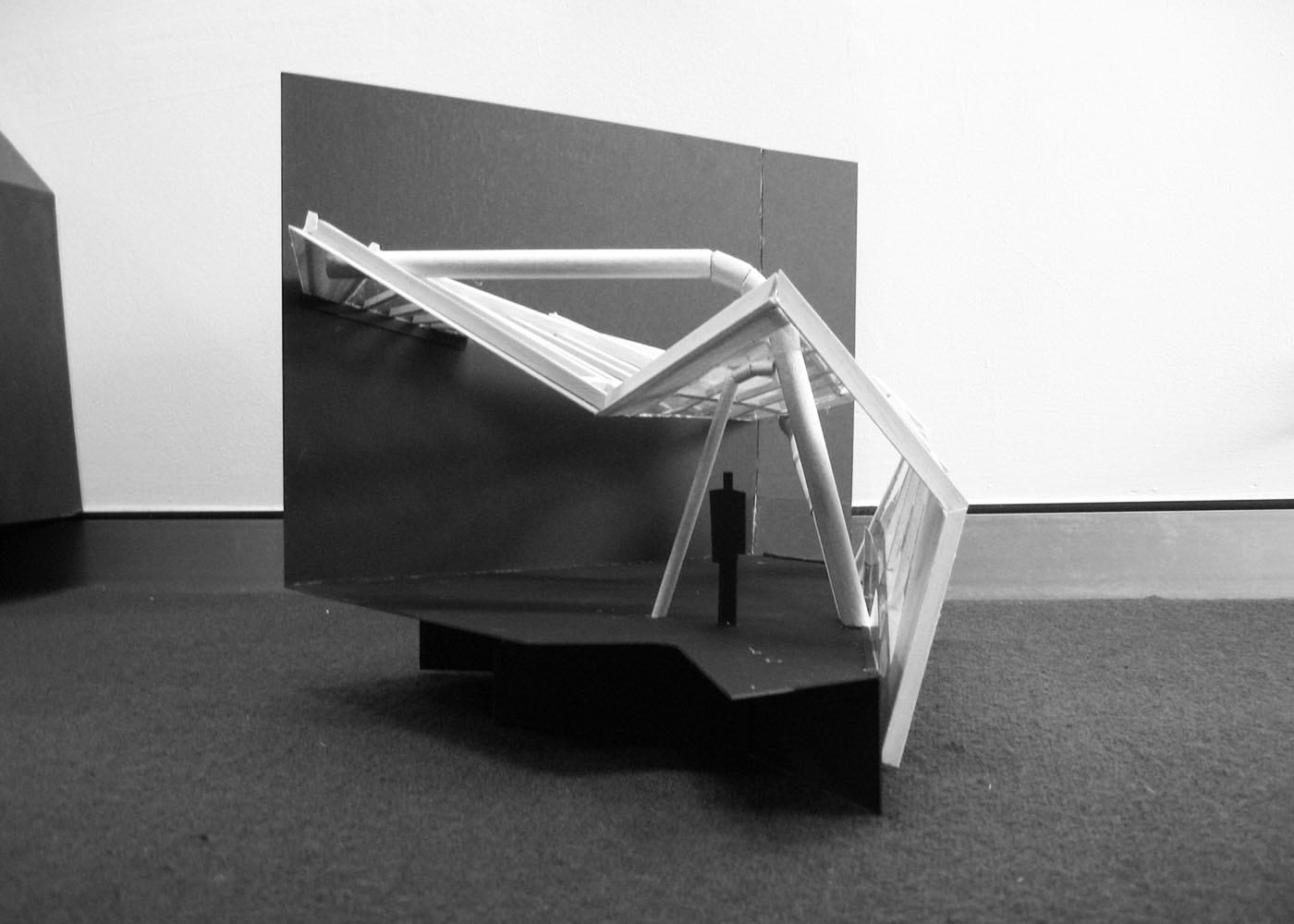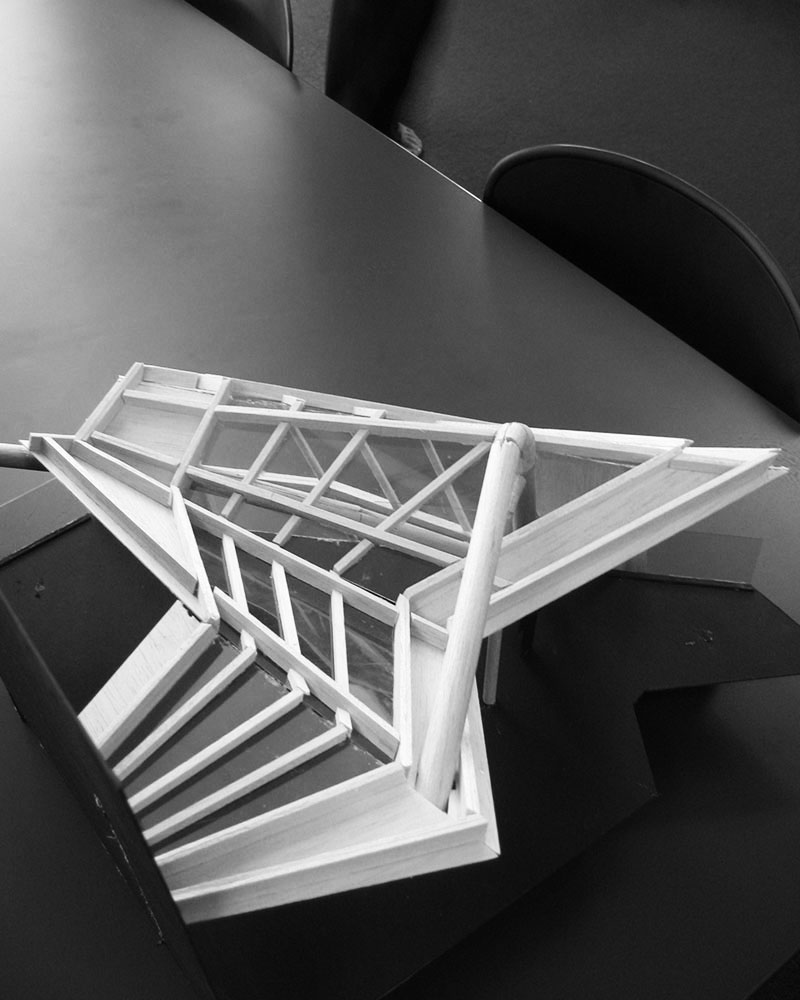-
Connecting a small place to a large city
George Street Plaza
Working with an existing building is an act of transformation through addition and subtraction, and so the question arises: what role do the additions play? Here, the basic structure and form of the building were to remain unchanged, with new work addressing poor circulation and habitation conditions both internally and externally.
The sharp corner adjacent to the building – an existing triangular remnant of the original street configuration – was developed into a new public space. Analysis of the existing topography and the need for new connections led to morphing and folding contours such that the various levels were reconnected in a single fluid piece of spatial choreography. The final configuration combines a formal entry and axis, a flat area for café seating and a textured, sloped plaza for casual occupation and seating. A small canopy sits in the north-east corner of the space, which evolved from an analysis of sun, wind and tenant use requirements.
- TYPE Urban Space | Urban Intervention | Urban Renewal
- LOCATION Sydney | AU
- YEAR 2006
- PHOTOGRAPHY
APPROACH
The design of the plaza and canopy is characteristic of many TERROIR projects. At first, it appears as an unexpected form, adjacent to the heritage building. However, on further examination, the angles and folds in the ground plane are extremely specific and tie a series of uses to each other and to the adjacent street where levels change dramatically. Similarly with the canopy, a further elaboration of this geometry and which is design to afford views up George Street while folding down to protect café visitors from the wind. Its scale and form give it a toy-like quality, while it is often seen in silhouette against the Sydney Harbour Bridge from which it borrows its colour and paint finish.
